Military artist Nikolai Zhukov
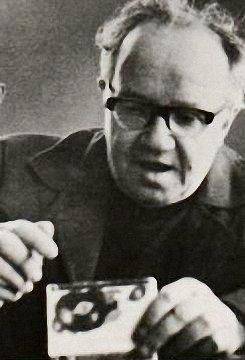 Parents dreamed of a military career for his son, but did not interfere with his hobbies. And the son did not part with the pencil. He painted literally everything that came to his eyes, copied from postcards and reproductions of works by famous artists. Realizing how great the desire of the boy was, Kolya's father constantly bought reproductions of paintings, posters, postcards. It can be said that these were the first part-time drawing lessons of Nikolai Nikolayevich.
Parents dreamed of a military career for his son, but did not interfere with his hobbies. And the son did not part with the pencil. He painted literally everything that came to his eyes, copied from postcards and reproductions of works by famous artists. Realizing how great the desire of the boy was, Kolya's father constantly bought reproductions of paintings, posters, postcards. It can be said that these were the first part-time drawing lessons of Nikolai Nikolayevich.At school, he was "the most important" in terms of wall newspapers and posters. I must say, the talent of the boy in the first years helped the family to live in difficult revolutionary years. Kohl masterfully painted playing cards on thick paper, and his mother carried them to the market and exchanged them for milk and bread.
Life in Yelets was difficult. Anxious revolutionary time, the Civil War, battles often unfolded near Yelets. So, once a part of the Mamontov's gang broke into the city. Threatening with cruel reprisals, they broke into the houses of civilians, looking for Jews. Kolya's mother hid two Jewish neighbors in her cellar. And when the bandits broke into the house, she fell to her knees, holding the icon in her hands. She said that this was the greatest value in the house, and she managed to distract the bandits from the woodshed.
As a boy, Kohl grew up smart and inquisitive. Managing to draw a lot, he also did swimming, gymnastics, famously twisted the “sun” on the horizontal bar, twisted some flips and ran great. True, he learned this not only through sports, but also from one curious stories. At school, Kohl fell in love with the first beautiful student, who was two years older than him. The age difference did not prevent the guys from being friends. But the former admirers of the girl did not give the lucky Kolya a pass. Every day we watched in dark corners, burning with a thirst for revenge. So the disciple Zhukov had to learn to run like the wind. So never got caught!
Nikolai received his primary art education at the Nizhny Novgorod Art Industrial School. And in 1928, he became a student at the Saratov Art School. Then there was military service, moving to Moscow - and the beginning of an independent creative path. The young artist collaborates with book publishers and periodicals, draws up posters and magazine covers. Few people know, but the packaging of “Kazbek” cigarettes known to every smoker is also the work of Nikolai Nikolayevich.
In 1935, real fame came to the artist. In London, held a competition for the best advertising poster "Intourist." The competition was anonymous, before the award ceremony no one knew the names of the authors and their country of residence. Zhukov sent five of his works. And when the jury members began to open the envelopes, it turned out that the four works of the winner belong to the same person! ..
From the diary of Nikolai Nikolaevich Zhukov: “Five days before the start of the war, 17 June, I received a notice from the military registration and enlistment office to appear for a training session. 18 June was my last civilized evening, and in the morning of 19, the cold metal of the shearing machine brushed my curls into a pile. I really didn’t want to interrupt work even for the duration of the training camp. Curls will grow and be even better, and time is a pity ...
... The train with the soldiers departed from the platform. Nervously floating crowd of mourners. Among the milestones, hurriedly waving their hands, relatives run, directing my eyes wet with tears. I thought then how can I expressly create this picture, dullly visible, as if through a veil of tears. We went to the training camp in the city of Molodechno. The declaration of war caught in the Great Bows. The shock was incredible. Even peaceful construction logs stacked on the platform of oncoming trains were perceived as muzzle guns ... ”
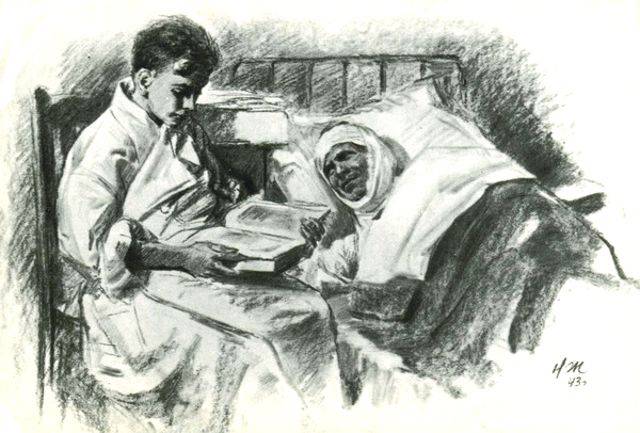
The first months of the war Zhukov spent in Belarus, he was appointed clerk at the headquarters. But this occupation was not at all for Nikolai Nikolaevich. And at the end of August 1941 of the year he achieved the appointment of the front-line artist of the 29-th army of the Kalin Front. The newspaper of this front was called “To defeat the enemy.” At the same time he worked as a war correspondent for the newspaper Pravda. True, as a correspondent, Nikolai Nikolayevich behaved very restrained, even shy. He met with soldiers who had fought, asked them about their feelings, and then immediately sat down to draw what he saw. At the same time, the impression was created that Zhukov had no draft work - everything was done right away, but it was very accurate. For this he was nicknamed the master of lightning drawing.
Work was in full swing. Only in the first few months more than a hundred drawings came out from under Zhukov’s pencil. I must say, Nikolai Nikolaevich rarely managed to create alone. As a rule, comrades stood behind their backs and watched the work with interest. Zhukov didn’t like it very much, but he was an extremely patient and respectful man.
One can not but mention the famous poster of the master “Defend Moscow!” (In collaboration with VS Klimashin). Artists painted it all over the same night of October 1941 of the year. In the morning they took it to the publishing house - and very soon the poster was already pasted on the streets of many cities.
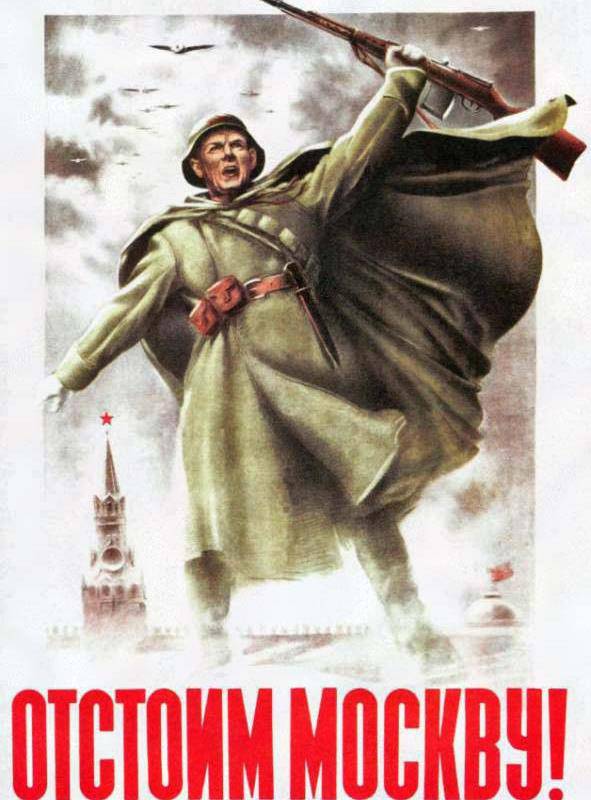
Another well-known poster of Zhukov - “The German tank will not pass here!” (1943 year). The famous director Leonid Bykov once admitted that while playing the last minutes of the life of his hero Semyon in the movie “Aty-bata”, he represented this particular poster - so expressive was the power of the artist.
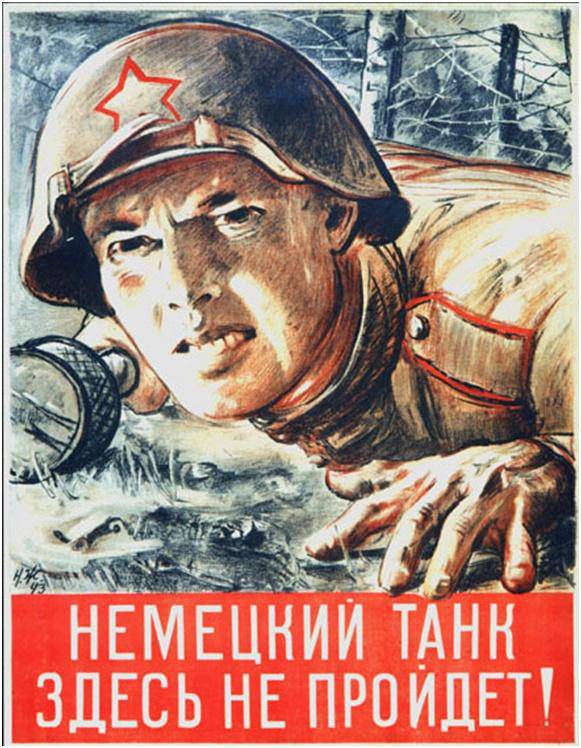
Unfortunately, a significant part of Nikolai Nikolayevich’s work was not preserved in the original: in order to print posters in the newspaper, they were first cut into four parts, each photographed separately, and only then they created a model of a future newspaper strip. But even in this kind of work they were amazed by their accuracy. And this is not surprising: the artist was not afraid of any scorching heat, as if he was sure that bullets and shells would fly past him ...
From Zhukov’s diary: “Once, on a cold snow-whirlwind day, when heaven and earth form one common white darkness, when no one could expect a raid aviation, some wild fascist bomb carrier hit the village of Dvoinia, where our editorial office was located at that time. It happened about 12 hours. The next issue of the newspaper was printed, and each went about his own business. Suddenly, a roar came from the roof of the house. The plane flew very low, as visibility was poor. The sudden roar created the impression that the plane hit the pipe of our hut ... And after that we heard a bomb explosion. Almost a direct hit, she ended up in a house diagonally about us. Two children were killed, the hostess mother, the editorial staff and the driver. Against a blizzard from the street, a ruined house was visible. As in a curved log frame, in a room that survived with three walls, there was a table, on it a hot samovar, an icon that fell on a bench. Everywhere there were some things crushed by logs and boards. The warm, lively breath of a room with a samovar was remembered forever. Long and hard with crowbars they dug the grave. The ground is frozen, succumbed to tight. Buried near the village. A moment of silence, a cold wind ruffled hair, tears froze on the cheeks ... "
In 1943, Zhukov was appointed to the post of head of the military artists studio named after M. B. Grekov (he led her for thirty years). Military artists were scattered on different fronts, but the work of the studio did not stop even for a day. They constantly visited partisan detachments, illustrated military books preparing for publication, and painted posters.
From Zhukov’s diary: “We moved together with combat units and witnessed the complete defeat of the Germans, starting from crossing the Prony river, taking Mogilyov, liberating Minsk, Vilna and going to the Neman. Knowing German organization and discipline, we were amazed at the power of our blows. All the battle battle formations of the Germans are broken, abandoned vehicles, carts, and traces of tremendous panic everywhere. Ripe rye spiked on the fields, birds sang, and hundreds of unmade German soldiers were decomposed in the heat in the bread — our soldiers never did that. We did everything then just a huge number of drawings ....
... Let's go to the partisans - tomorrow there will be a parade of partisans in Belarus. On a huge parade-ground, partisan brigades settled down, about 150 thousands. Picture for Surikov: boilers are smoking, horses are grazing, teams are located in a heap, each in its allotted place, with battle flags, and each team is necessarily with something distinctive — either with a learned rooster, or with a specially discharged goat: there is a green grid on the horns, with a belt on the belly and with a captured gun. On the river, fish is jammed with grenades and right there on the beach they fry, boil fish soup ...
... The parade was great. The goat I mentioned went in a column, it is important to keep your distance and go to the beat of the orchestra, everyone was amazed at the fairy goat, outlandish things are told about him ...
... In Vilna received a work permit, registered with the commandant's office. Fell asleep in 3-30. There were fires all around, the raid began after dinner, when they had just settled down, for the first time taking off their boots, pants, and gymnasts. The house was next to the freight station, where now there was a large accumulation of military units, and on the dais was an anti-aircraft battery. At the first blow, the house that was standing across from us was destroyed. The blast wave in our room tore the window frame, a heavy mirror hung on one nail and swayed like a pendulum over our heads. The hostess and her little children woke up and were horrified by what was happening. We lay with Avvakumov on the floor in the room of the hostess, having pressed her children to us. All my life will be remembered, as my hand clutched the boy's warm palm, and in it his childish heart was clearly pulsing. Each bomb seemed to fall on you, but there was no fear. All consciousness was filled with a sense of justice in our work, and the closeness of the children filled the heart with faith in the victory of life ... ”
Victory Nikolai Nikolayevich met on Austrian land.
And in February, 1946, Zhukov, together with the delegation was sent to the Nuremberg Trials, where an international trial of the ideologists of fascism took place. Zhukov was very worried and, apparently, from this excitement made a tactical mistake: he sat down in the first row and began to openly draw the faces of despots. But they immediately began to turn away, hide behind their hands. Then Nikolai Nikolayevich pretended that he was leaving, and he himself moved into the last row. It was visible from there, of course it was bad, but the artist had binoculars with him. True, the audibility here too could not be called good, but those. Who sat in the last rows, used special headphones. 40 spent the days of Zhukov at the meeting and made more than four hundred drawings - a whole book of illustrations of this historical event.
More on the war began the friendship of Zhukov and Boris Polevoy, and it lasted all their future life. The famous “The Story of a Real Man” was illustrated by the 19 man.
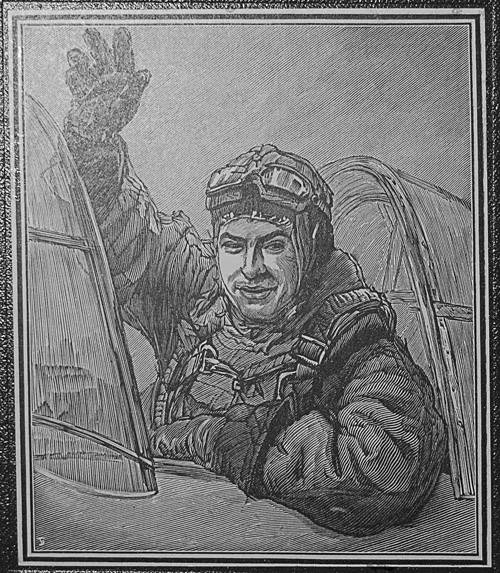
But the work of Nikolai Nikolaevich recognized as the best (for this he received the second Stalin Prize, and the first he was awarded in 1943 year for a series of drawings about the war). By the way, in the archive of the artist there is also a portrait of Field, made at the Nuremberg process.
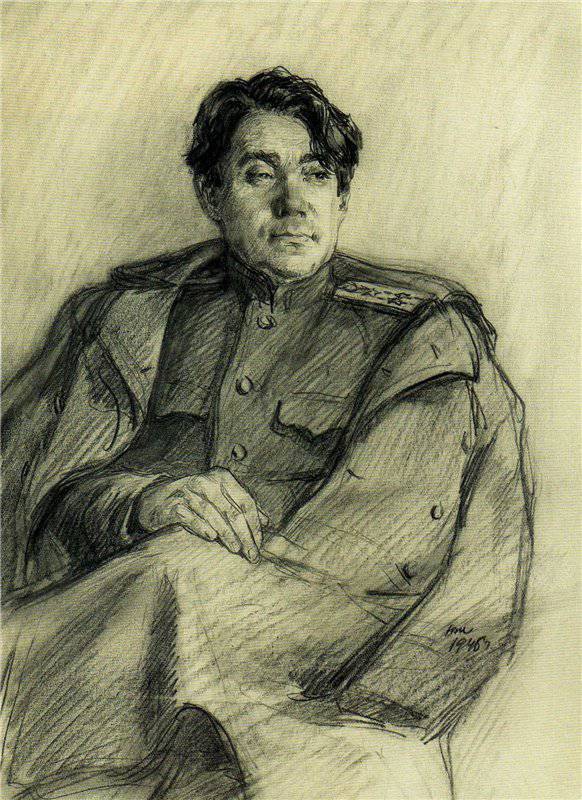
Few people know, but it was Zhukov who became the author of the Oktyabryatskaya star. A man who devotedly loved children, with great pleasure he painted his two sons and two daughters after the war. Children's theme has become one of the main in his post-war work.
Zhukov 24 died on September 1973 of the year. He died suddenly, at the height of his fame, from a heart attack ...
And the town of Yelets remembers its countryman. It houses the museum of Nikolai Nikolaevich, where many of his personal belongings, documents and drawings are kept. And Zhukov himself, though born in Moscow, considered himself to be Yelets. And even in the letter to his mother, which he managed to send directly from the Nuremberg process, there were such lines: “Mother, there are artists here. But ours - Yeletsky - the best "...
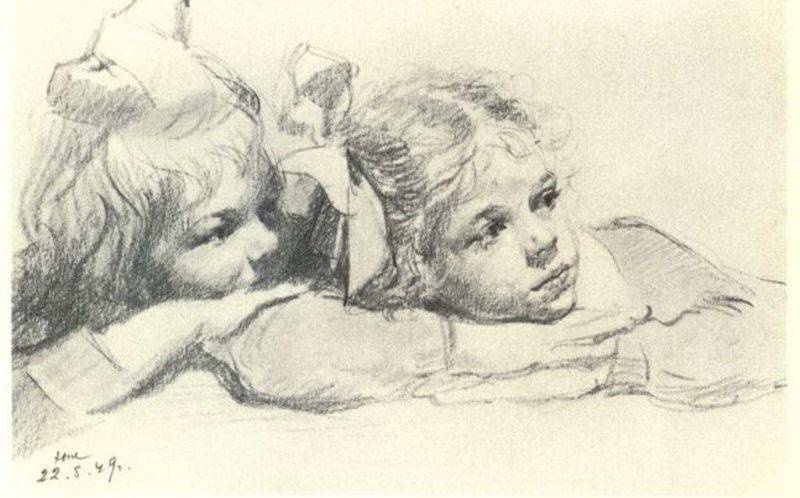
Information